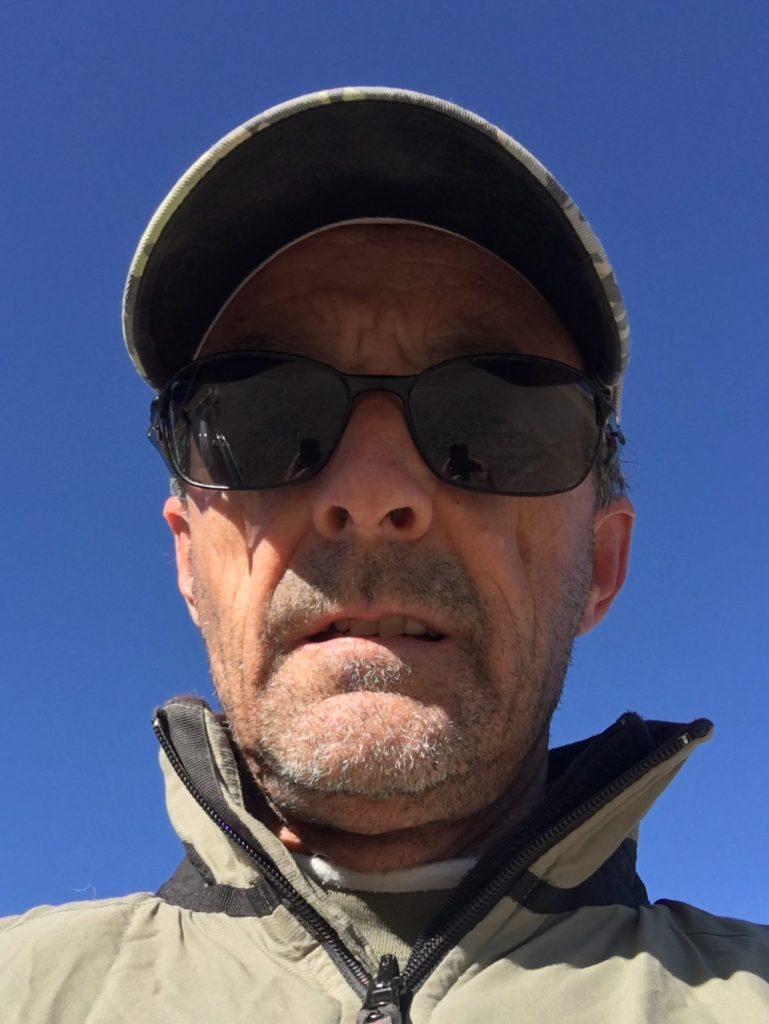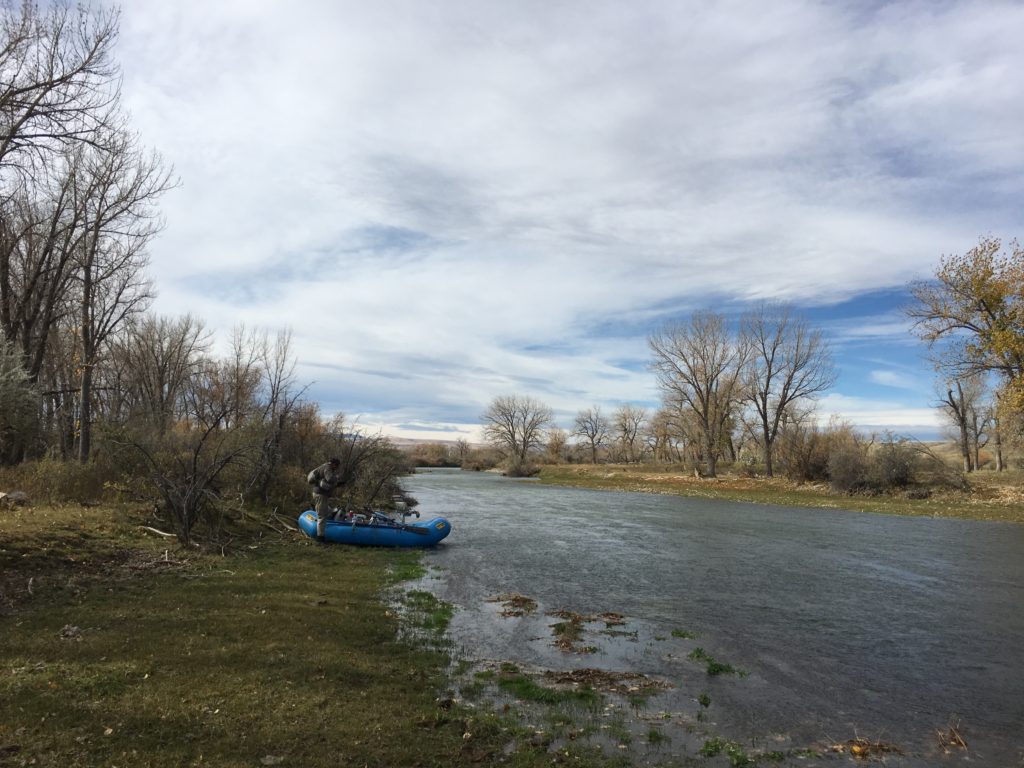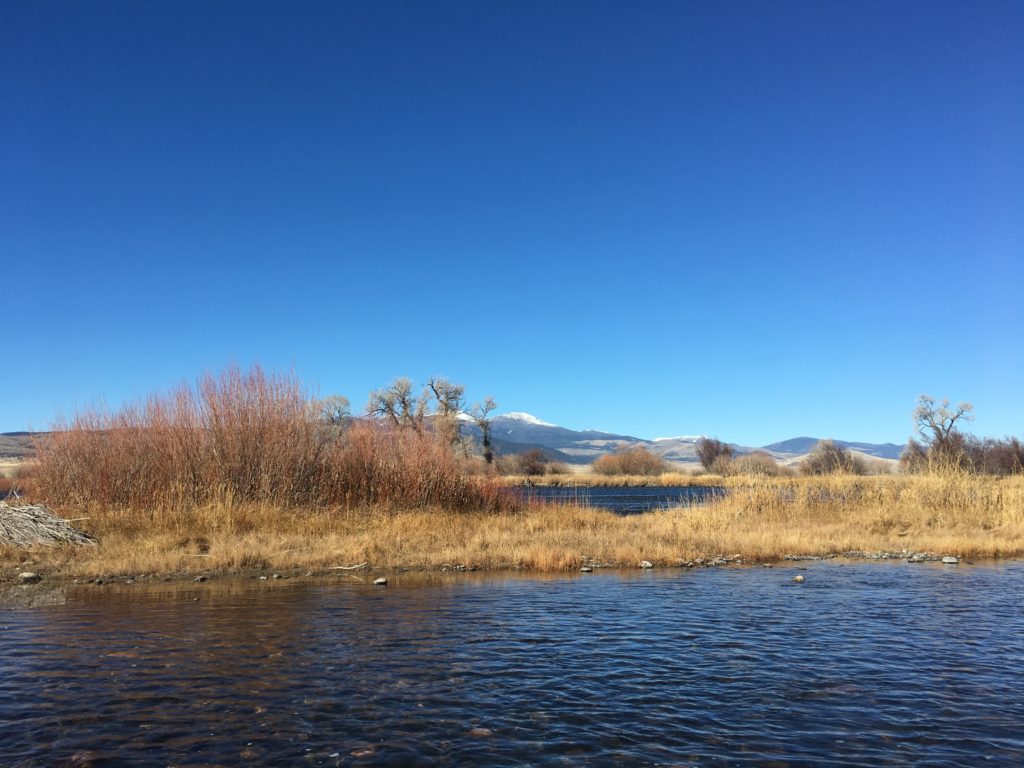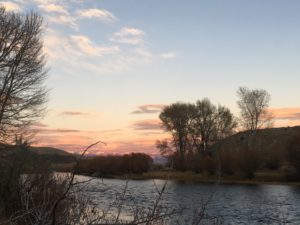“We’re going after big fish this afternoon. Enough of this little fish nonsense.”
I reached under the seat for my fly box, rummaging through the collection of parachutes and hair wings with feigned indecision despite knowing exactly what I was looking for.
“I’ve only got one of these, so don’t mess up.”

I kept my focus on the fly box, knowing eye contact with Andy would cause me to lose the hard-ass facade I was having fun with. I liked Andy. I could tell he’d been nervous at the fly shop that morning, but unlike many anglers who say they want to learn then proceed to ignore any advice you give, he’d tried to incorporate much of what I’d suggested into his technique. I’d told him at lunch he was a lot better angler than he gave himself credit for.
“You’ve got ten casts to show me you can fish this, otherwise I’m taking it back.”
I wondered what his PA or sales team would say if they saw him being ordered around by some guy with a sweat-stained ball cap and five days growth on his chin. I cinched the knot tight and handed him the line.
“I want to see the fly an inch off the bank. I don’t care if you think the water is too shallow, or there’s no fish there, one inch, OK?”
He nodded and began to false cast as I eased the boat out into the current. His first attempt landed a foot out. I waited to see if he would pick up and recast, but he instead shaped to mend.
“Pick it up. You’re a foot shy. You can see the fly, right?”
He nodded and cast again. Eight inches.
“You’re getting closer, but imagine how many fish you’d catch if you cast to where they actually are. Get it in there.”
The next cast hit a rock bank-side and slid into the water.
“Now you’re talking. Keep mending to maintain the drift going as long as you can.”
There was change in the contrast of the water around the fly, a flicker of light in the cobbles, and the fly vanished without any disturbance to the surface.
“Pick it up! Pick it up!”
Half turning, he lifted the rod uncertainly. Following brief tension on the line the fish spat the hook, thrashing momentarily on the surface as it did so.
“Damn. I never would have guessed that was a fish. I didn’t see a thing.”
“Big fish don’t expend an ounce more energy than is necessary. Half the time you set by instinct. Next time, if you sense anything strange—anything—going on around the fly, set the hook. Wait long enough to think about it, it’s too late.”
Three casts later, and the fly nestled against the bank once more. This time the take was a little more obvious, the fish rising and drifting tail-first downstream with the fly before gently sipping it. The hook-up was announced by a huge churning on the surface, showering the rocks and bushes nearby with spray. A couple of minutes later we had the fish in the net, a sixteen-inch brown trout—very respectable for the river and the biggest he’d ever caught. Unhooking it, I lowered the net back into the water and the brown swam free.
Back at the side of the river, I parked the boat and reached into the cooler. One can of beer later, and he was still smiling.
“So, would you rather catch one like that, or half a dozen little ones out in the middle of the river?”
He nodded. I finished my beer.
“Personally, I don’t want my enjoyment of the day to be compromised by messing with too many fish.”





